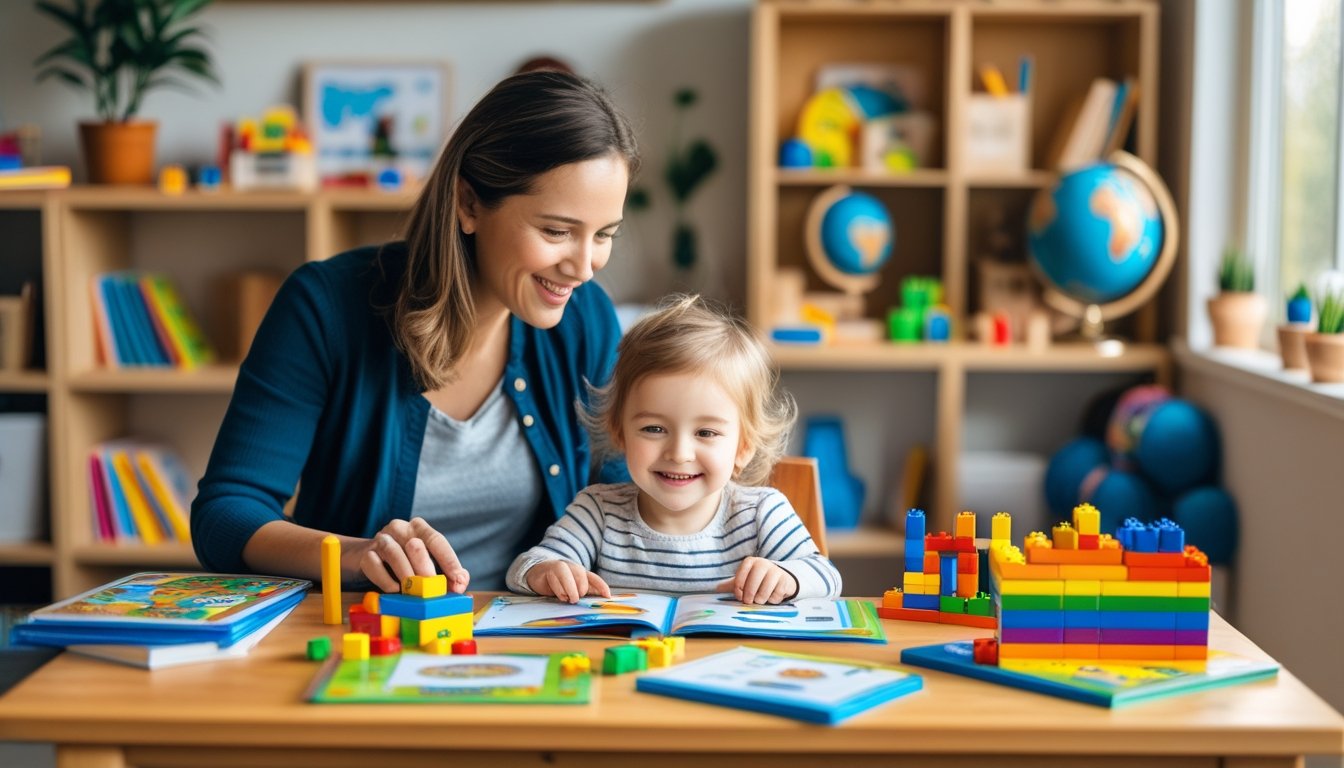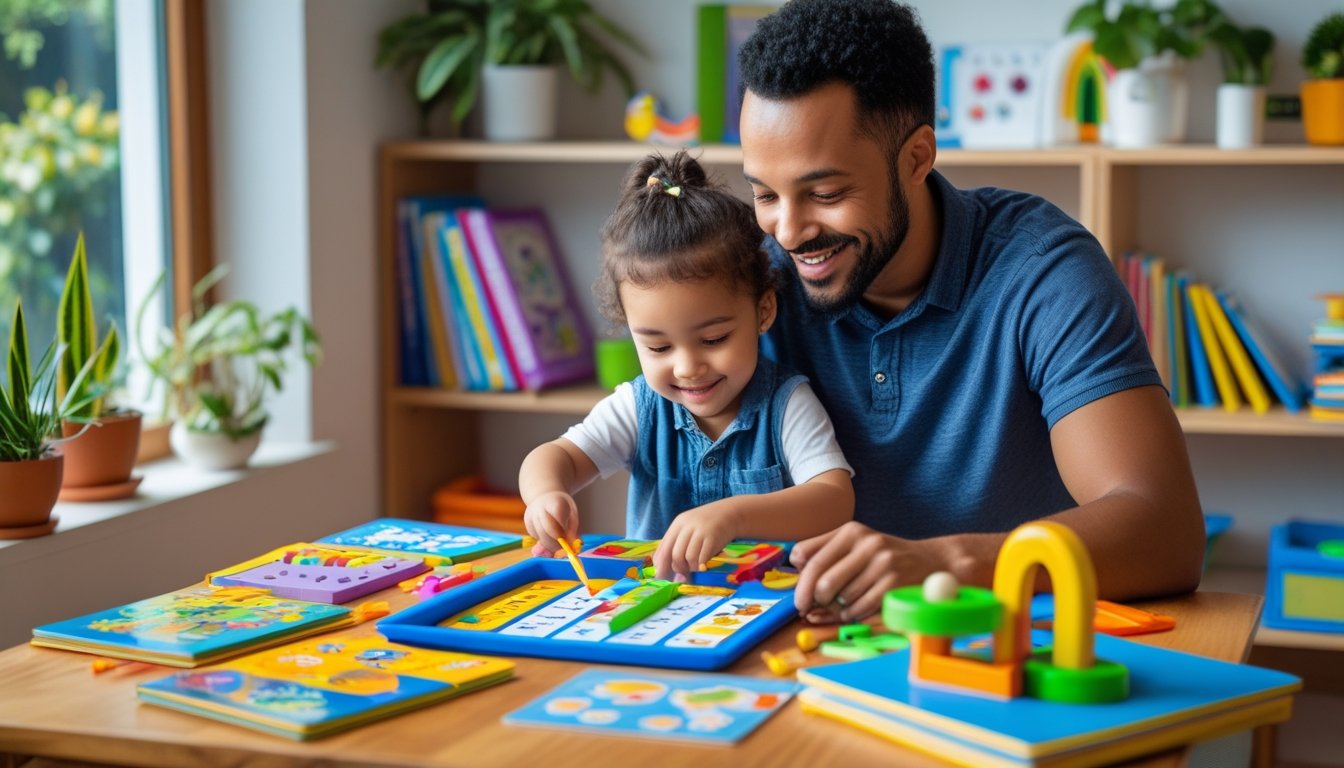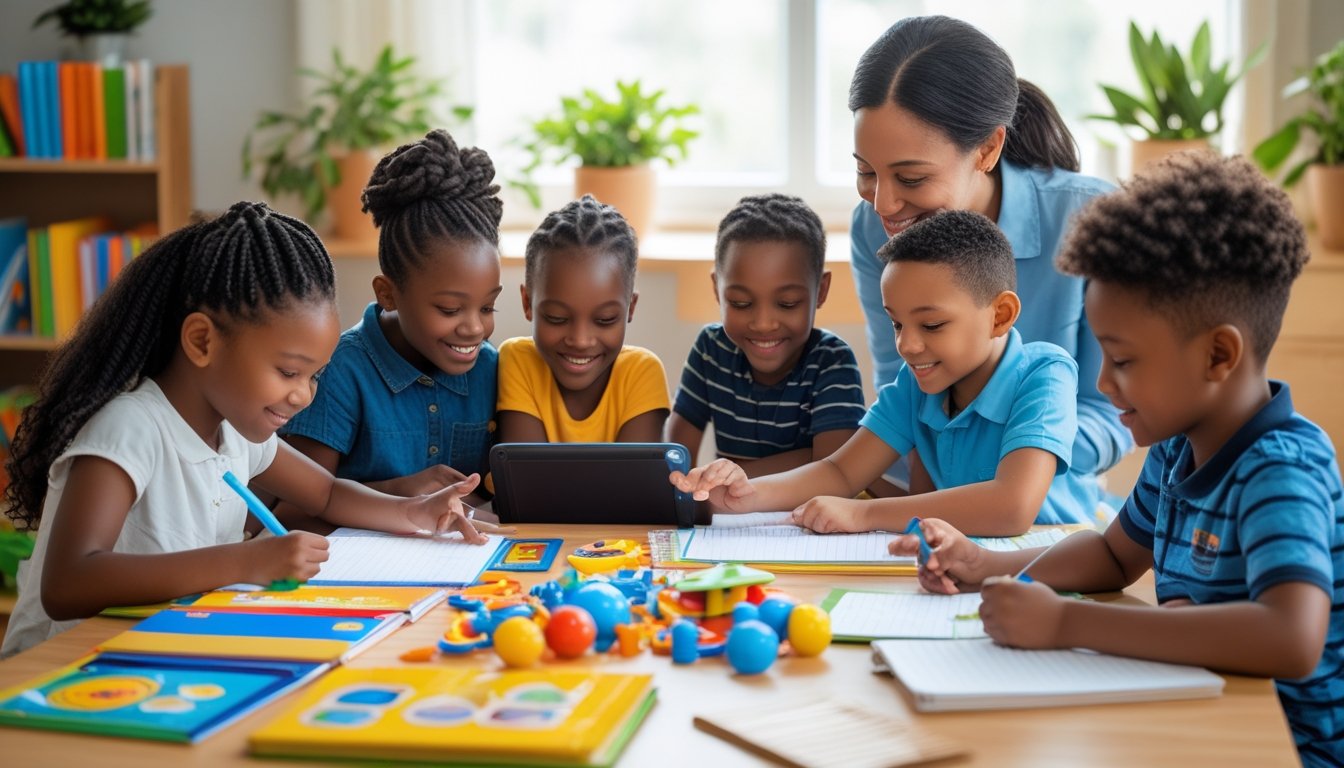Late updated: 29 Oct 2025 13:10
Written by:
Tips For Enhancing Children's Learning At Home: Effective Strategies And Activities
Engaging children in learning at home can serve as a powerful extension of their formal education. When we transform home environments into nurturing learning spaces, children can enjoy substantial cognitive and emotional benefits. By using engaging methods like interactive educational games or incorporating everyday activities into learning, we can effectively inspire curiosity and development.

Our approach should cultivate an environment that supports exploration and personal growth. By creating an atmosphere where children feel happy, safe, and secure, we can help them reach their full potential. These efforts not only complement school learning but also equip children with essential skills for lifelong success.
We must remember that enhancing learning at home doesn't have to be complicated or overwhelming. Simple strategies can have a big impact, providing valuable support to children and fostering a love for learning that will stay with them throughout their lives.
Key Takeaways
- The home environment can promote curiosity and development.
- A nurturing space enhances cognitive and emotional growth.
- Simple strategies effectively support lifelong learning.
Key Strategies for Enhancing Children's Learning at Home

To effectively support children's education at home, we must create a setting that nurtures curiosity and learning. This involves establishing a conducive learning environment, promoting literacy, and balancing schoolwork with home life. Let's explore these strategies in detail.
Creating a Supportive Learning Environment
Our aim is to construct an area where children feel enthusiastic and focused. Designate a quiet and organised space with minimal distractions, ensuring all necessary supplies are readily available. This helps children concentrate on their tasks without unnecessary interruptions.
Natural light and comfortable seating can also make a difference. Consistent routines reinforce structure, so let's establish clear and realistic study schedules. Flexibility is crucial, allowing breaks for physical activities to prevent fatigue and maintain interest.
Fostering Literacy and Reading Engagement
Developing a love for reading starts at home. Incorporating daily reading routines, even if it's just for a few minutes, can make a significant impact. We should encourage children to choose books that interest them, which boosts engagement and builds positive reading habits.
Interactive activities like reading aloud together or discussing stories enhance comprehension and vocabulary. We can support literacy by offering a variety of reading materials, such as books, magazines, and educational websites, catering to different preferences and reading levels.
Incorporating School Activities and Homework Effectively
Balancing schoolwork and personal time requires careful planning. We should collaborate with teachers to understand assignments and expectations. Create a plan that integrates school activities into the daily routine without overwhelming the child.
Encouraging independent learning while remaining available for assistance fosters confidence. Let’s use a mix of hands-on projects and digital resources to keep learning interactive and engaging. Regularly reviewing completed homework together helps assess progress and address any challenges.
By focusing on these key strategies, we can enhance the learning experience at home, ensuring that children develop essential skills and a lifelong love for learning.
Cultivating Essential Skills Through Home-Based Learning
Creating an effective home learning environment can significantly contribute to developing children's essential skills. It is crucial to focus on encouraging critical thinking and fostering creativity. Parents can adopt various strategies to nurture these skills during daily activities.
Encouraging Critical Thinking and Curiosity
Critical thinking is a key skill we can cultivate by integrating problem-solving activities into our children's daily routines. Engaging children in discussions and asking open-ended questions stimulates their analytical abilities.
This encourages them to consider various perspectives and develop sound reasoning skills. One approach is to involve children in decision-making during simple tasks, like planning a family meal. This method enhances their ability to analyse and evaluate.
Curiosity can be fostered by exploring topics of interest together, using resources such as books and documentaries. Group activities, like family science experiments, can provide engaging ways to inspire curiosity, allowing children to form hypotheses and test outcomes.
Incorporating technology, such as educational apps and online courses, can further stimulate inquiry and provide a diverse range of information that piques their interests.
Promoting Creativity and Self-Expression
Creativity is vital for developing resilience and adaptability. We can nurture it by providing opportunities for artistic expression. Setting up a dedicated art space with various materials, such as paints and craft supplies, encourages children to explore their creative potential.
Introducing children to different forms of art, including music and dance, can broaden their horizons and promote self-expression. Encouraging participation in community arts or theatre groups also offers valuable opportunities.
Games that encourage storytelling or role-play can stimulate imaginative thinking. Parents can facilitate by participating or providing prompt cards to inspire new scenarios. Additionally, integrating creative technology tools like digital drawing apps ensures children have a variety of means to express themselves.
By focusing on these areas, we can equip children with the skills they need to thrive.
Frequently Asked Questions

We often encounter questions when addressing children's learning at home. These range from strategies for fostering literacy to the integration of technology in education, providing a comprehensive approach to a child's learning journey.
What strategies can parents employ to support literacy development in children?
Engaging children with books suitable for their age helps improve reading skills. Reading aloud together can foster comprehension and vocabulary. Encouraging regular reading habits by setting aside dedicated reading times is also effective.
How can we create an effective home learning environment for young children?
Establishing a consistent routine is essential. A designated learning space, whether it be a desk or a quiet corner, can help children focus more effectively on their studies. This area should be free from distractions and tailored to the child's learning activities.
What are the best techniques for engaging children with educational activities at home?
Incorporating games and interactive elements can make learning more enjoyable. Hands-on activities, such as arts and crafts or science experiments, can help children grasp concepts better. It's vital to ensure the activities align with the child's interests and educational level.
In what ways can technology be integrated into home learning for children?
Using educational apps and online resources to supplement traditional learning can be incredibly beneficial. Technology should be used to enhance understanding, such as through virtual field trips or interactive lessons. Monitoring screen time is crucial to maintain a balanced approach.
How can parents assess and support their child's learning needs without formal training?
Observation is a powerful tool. By paying attention to a child's strengths and areas for improvement, parents can identify learning needs. Communicating with teachers can also provide insights and resources tailored to the child's specific requirements.
What role does play have in enhancing a child's learning and retention at home?
Play is essential for development. It encourages creativity and problem-solving. Activities such as role-playing or building with blocks can aid in cognitive growth and retention. Play also instils a sense of curiosity and a love for learning in children.
